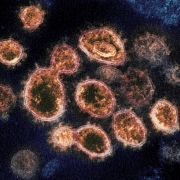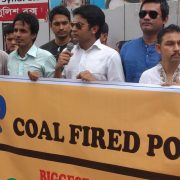Opinion: The President’s Plastic Trigger
President Trump delights in alarming opponents and aiding friends in polluting industries
By Keith Schneider, Circle of Blue
In mid-December 2020, a month before he left office, President Donald Trump quietly signed the Save Our Seas Act to put the federal government’s shoulder to the work of developing alternatives to disposable plastic products, encouraging recycling, and limiting plastic debris in the world’s oceans.
It took years of civic activism about the harm plastic causes to human health and the marine environment to convince Trump to sign the law, which helped prompt leaders of 175 nations to begin negotiating a treaty two years later to prevent plastic pollution.
Two years after that, in the summer of 2024, President Joe Biden joined the campaign with a notable directive to federal agencies to replace plastic straws, cutlery, and packaging with those made from paper and other biodegradable materials. Biden’s order followed decisions by California to ban plastic straws, and Starbucks and Alaska Airlines to phase them out.
Early this month President Donald Trump blew up much of that exemplary government and corporate work with an executive order to halt purchases of paper straws by federal agencies, and develop a strategy by April to eliminate them nationwide.
Trump had his reasons. He doesn’t like using paper straws, asserting they are flimsy. The order noted that paper straws contain PFAS, a harmful toxic chemical. That’s accurate for some straws. Plastic is cheaper than paper, the order said. Still, the motivation expressed most clearly in the order was this characteristically Trumpian low blow: “Cities and states across America have banned plastic straws, caving to pressure from woke activists who prioritize symbolism over science.”
Let’s recall that the efforts to change the market for straws – like efforts to influence the sale of clean cars or charging stations or solar panels or wind generators, or any of the other equipment that Trump describes as “woke,” but are intended to make the planet safer and healthier – had nothing to do with “symbolism over science.”
The motivation, in fact, was all about science. The science that found the Earth is warming in dangerous ways. The science that identified toxic chemicals in polluted waters also contaminated human blood. The science that confirmed clean energy and electric cars were much safer to the environment and health, and potentially much larger sources of employment, than powering the nation with coal or oil.
Now let’s turn to the movement to end the use of plastic straws. The science-based core of the campaign is the global revulsion to the toll plastic waste is taking on the world’s oceans, where a plastic garbage patch three times the size of France floats between California and Hawaii, and apex marine species like whales, seals, dolphins and turtles are maimed and drowned by discarded nets, toys, bottles, and tubes.
Nearly 400 million metric tons of plastic are manufactured annually, according to various market analyses. As much as 13 million tons of plastic ends up in the ocean, causing an estimated $13 billion in economic damage to global marine ecosystems, according to the UN Environment Program. Most of this waste is carried to the ocean by rivers. Unless the world changes its practices and embraces new technology, quickly, the volume and weight of plastics in the ocean in 2050 could be greater than all the fish in the seas, the World Economic Forum reported in 2016.
Before 2012, when the call for banning plastic straws started, nearly all of the $300 million market for straws in the U.S. was plastic. Much of that market was supplied from China. Bans on plastic straws in the U.S. from coastal cities such as Palm Beach and Seattle dramatically influenced the straw market. By 2022, the U.S. straw market grew to nearly $600 million annually; 20 percent of American straws were made of paper or biodegradable materials.
Amid all the stray plastic fishing gear, plastic containers, plastic wrap, plastic bags and other plastic waste floating around the oceans and turning beaches into solid waste dumps, plastic straws account for a tiny share. Yet, in 2018, two Australian researchers reported that 7.5 million plastic straws were discarded on American beaches, 8.3 billion plastic straws lay on the world’s beaches, and each year 2,000 tons of plastic straws floated into the oceans.
Plastic straws and stirrers are among the top ten items collected during Ocean Conservancy’s International Coastal Cleanup. Nearly 14 million plastic straws and stirrers have been removed from beaches and waterways globally over the last 35 years, according to the non-profit group.
As a marketing message for effective environmentalism, the aspirational goal of making straws from safer materials converged with clearing plastics from the seas. Helped by the campaign to change materials used to manufacture straws, plastic pollution is now a global environmental and health priority.
There’s nothing aspirational about President Trump’s attack on paper straws and other environmental and public health improvements made by the federal government in the last decade. The administration’s motivation is the president’s delight in triggering opponents and aiding friends in polluting industries. It’s a dangerous deployment of executive authority. It largely ignores the goals of the Save Our Seas Act, which this same president signed into law.
Summed up, plastic straws are a measurable segment of the global plastic pollution calamity. The fix is easy. Just stop using them.
Circle of Blue’s senior editor and chief correspondent based in Traverse City, Michigan. He has reported on the contest for energy, food, and water in the era of climate change from six continents. Contact
Keith Schneider












Leave a Reply
Want to join the discussion?Feel free to contribute!